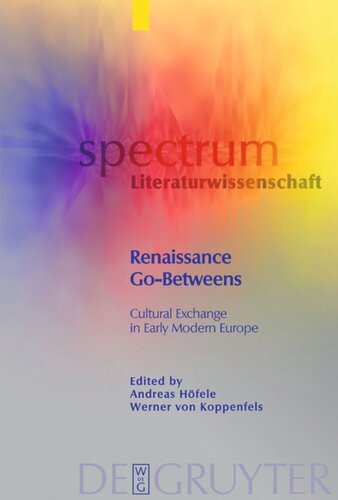

Most ebook files are in PDF format, so you can easily read them using various software such as Foxit Reader or directly on the Google Chrome browser.
Some ebook files are released by publishers in other formats such as .awz, .mobi, .epub, .fb2, etc. You may need to install specific software to read these formats on mobile/PC, such as Calibre.
Please read the tutorial at this link: https://ebookbell.com/faq
We offer FREE conversion to the popular formats you request; however, this may take some time. Therefore, right after payment, please email us, and we will try to provide the service as quickly as possible.
For some exceptional file formats or broken links (if any), please refrain from opening any disputes. Instead, email us first, and we will try to assist within a maximum of 6 hours.
EbookBell Team

5.0
20 reviewsThe volume analyses some of the travelling and bridge-building activities that went on in Renaissance Europe, mainly but not exclusively across the Channel, true to Montaigne's epoch-making program of describing 'the passage'. Its emphasis on Anglo-Continental relations ensures a firm basis in English literature, but its particular appeal lies in its European point of view, and in the perspectives it opens up into other areas of early modern culture, such as pictorial art, philosophy, and economics. The multiple implications of the go-between concept make for structured diversity.
The chapters of this book are arranged in three stages. Part 1 ('Mediators') focuses on influential go-betweens, both as groups, like the translators, and as individual mediators. The second part of this book ('Mediations') is concerned with individual acts of mediation, and with the 'mental topographies' they presuppose, reflect and redraw in their turn. Part 3 ('Representations') looks at the role of exemplary intermediaries and the workings of mediation represented on the early modern English stage.
Key features